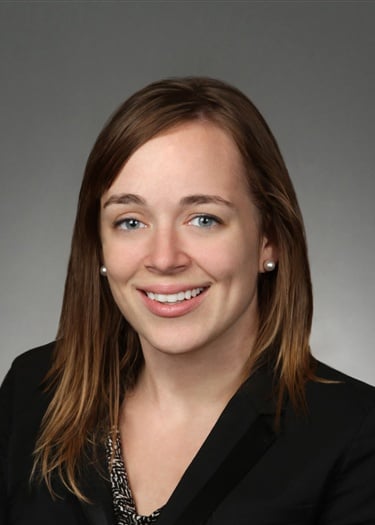Global Life Sciences Update
CMS Finalizes Key Medicare Reimbursement Policies for Telehealth, Chronic Disease, and Digital Health
Last week, the U.S. Centers for Medicare & Medicaid Services (CMS) released a display copy of the Calendar Year (CY) 2026 Medicare Physician Fee Schedule (PFS) Final Rule (PFS Final Rule). CMS finalized several notable proposals from the CY 2026 PFS Proposed Rule that will have a significant impact on Medicare reimbursement for physician services, including a 3.85% increase in physician reimbursement rates following five consecutive years of rate cuts.
CMS also finalized certain proposals, or is seeking comment on items, of significant importance with respect to Medicare reimbursement for telehealth services, chronic disease and behavioral healthcare, and digital health.
The PFS Final Rule is effective January 1, 2026. Below, we address certain key proposals that CMS finalized and also that it declined to finalize, but which may inform future rulemaking. CMS’s proposals are also described in more detail in our prior Sidley Update on the key reimbursement provisions in the CY 2026 PFS Proposed Rule, available here.
For a look at potential government price reporting implications of the PFS Final Rule, including finalized policies related to Average Sales Price methodology, bundled price concessions, skin substitutes, and Medicare Prescription Drug Inflation Rebate Program implementation (including policies intended to help identify 340B units), please view our Sidley Update published on November 3, 2025, available here.
Key Reimbursement Provisions in Final Rule
Telehealth
CMS finalized its proposal to streamline the process for adding new services to the Medicare Telehealth Services List by reducing the current five-step evaluation method to a simpler, three-step process and deeming all services listed or added to the list for 2026 as “permanent” (i.e., eliminating the “provisional” service category). At step 1, CMS will determine whether the service is payable under the PFS. At step 2, CMS will determine whether the service is subject to the provisions of Section 1834(m) of the Social Security Act, which provides payment to physicians or other practitioners for services furnished via an interactive telecommunications system. Finally, at step 3, CMS will review the elements of the service as described by the Healthcare Common Procedure Coding System (HCPCS) code and determine whether each of them is capable of being furnished using an interactive telecommunications system as defined in §410.78(a)(3).
CMS also added the following new services to the Medicare Telehealth Services List: group behavioral counseling for obesity, multiple-family group psychotherapy, an infectious disease add-on code for inpatient visits, and auditory integrated sound processor services.
In addition, CMS finalized its proposal to permanently remove frequency limitations on certain nursing home and hospital telehealth visits that were originally lifted on a temporary basis during the COVID-19 public health emergency and finalized its proposal to permanently allow direct supervision of diagnostic imaging services via real-time telehealth (excluding audio-only), except for services using specified global surgery indicators.
CMS declined to add dialysis, telemedicine evaluation and management (E/M) services, and home international normalized ratio (INR) monitoring to the Medicare Telehealth Services List. Specifically, CMS stated that (i) it does not have sufficient information to determine if dialysis services meet step 3 of the revised Medicare Telehealth review process, (ii) telemedicine E/M services did not meet step 1 of the review process, and (iii) home INR monitoring did not meet step 2 of the review process.
Chronic Disease and Behavioral Health Management
Last year, CMS finalized and adopted three new HCPCS codes for Advanced Primary Care Management (APCM) services: (1) G0556 for beneficiaries with no more than one chronic condition; (2) G0557 for beneficiaries with two or more chronic conditions; and (3) G0558 for beneficiaries with two or more chronic conditions and are also Qualified Medicare Beneficiaries. For CY 2026, CMS proposed creating three new G-codes that could be billed as add-on services when the same practitioner reports one of the three APCM base codes for the same patient in the same month. CMS finalized its proposal to create three optional add-on codes for APCM that can be billed as add-on services when the same practitioner reports one of the three APCM base codes, adopted as part of the CY 2025 PFS Final Rule, for the same patient in the same month. CMS stated that these add-on codes will “encourage [Rural Health Centers (RHCs)] and [Federally Qualified Health Centers (FQHCs)] to provide complementary behavioral health integration (BHI) services, thereby improving access to BHI and Collaborative Care Model (CoCM) services for primary care patients in the RHC and FQHC settings."
PFS Rate Increases
Following five consecutive years of rate cuts, CMS authorized a 3.85% increase in physician reimbursement rates for CY 2026. To calculate the estimated CY 2026 PFS conversion factors, CMS stated that it took the CY 2025 conversion factor and multiplied it by the required budget neutrality adjustment, multiplied by certain other updates specified by statute, and then applied the temporary “one-year increase of 2.50 percent for CY 2026 established by statute.”
CMS also finalized the following proposals that it stated were intended to better “reflect contemporary physician practice trends,” including the following:
- Reducing Work Relative Value Units (RVUs) for non-time-based service codes, such as codes describing procedures, radiology services, and diagnostic tests, by 2.5% for CY 2026 to address its concerns that efficiency gains from evolving medical practices have not “been fully reflected in the valuation of Work RVUs for non-time-based services.”
- Revising its methodology for calculating indirect practice expense payments by reducing the portion of Practice Expense RVUs allocated based on Work RVUs to half the amount allocated to non-facility Practice Expense RVUs beginning in CY 2026. With this change, physicians and other practitioners will see a reduction in their indirect practice expense payments if they furnish services in facility settings where overhead costs — such as rent, staffing, and supplies — are already covered by a hospital or health system.
Digital Health
CMS finalized its proposal to expand its payment policies for three HCPCS G-codes for Digital Mental Health Treatment (DMHT) services to include payment for devices used to treat attention deficit hyperactivity disorder (ADHD). CMS states that expanding its coding and payment policies to include these devices is important “to more fully reflect the range of behavioral health disorders treated by FDA-authorized products.”
CMS declined to extend its DMHT payment policies to include coverage for devices that treat gastrointestinal conditions or fibromyalgia, but it stated that it may consider expanding the payment policy in future rulemaking.
Finally, in the CY 2026 PFS Proposed Rule, CMS solicited stakeholder feedback as to how CMS “should consider paying for SaaS [software as a service] under the PFS,” explaining that it believes that “innovative applications” such as “software algorithms and AI” (artificial intelligence) are “not well accounted for” under the current PFS practice expense methodology. CMS stated in the CY 2026 PFS Final Rule that it appreciates the feedback it received from commenters and may consider changes for possible future rulemaking.
Attorney Advertising—Sidley Austin LLP is a global law firm. Our addresses and contact information can be found at www.sidley.com/en/locations/offices.
Sidley provides this information as a service to clients and other friends for educational purposes only. It should not be construed or relied on as legal advice or to create a lawyer-client relationship. Readers should not act upon this information without seeking advice from professional advisers. Sidley and Sidley Austin refer to Sidley Austin LLP and affiliated partnerships as explained at www.sidley.com/disclaimer.
© Sidley Austin LLP
Contacts
Offices
Capabilities
Suggested News & Insights
- Stay Up To DateSubscribe to Sidley Publications
- Follow Sidley on Social MediaSocial Media Directory





